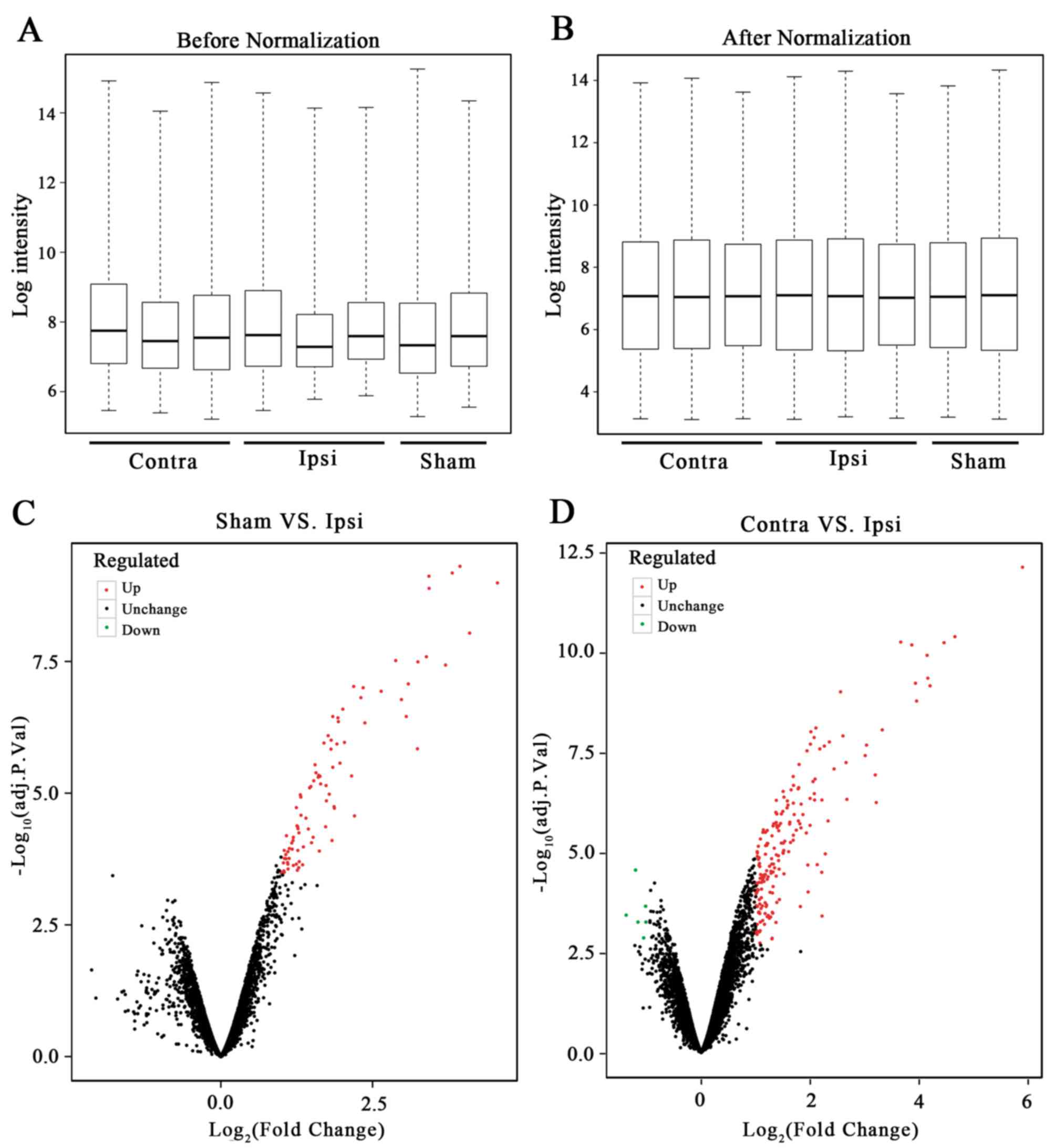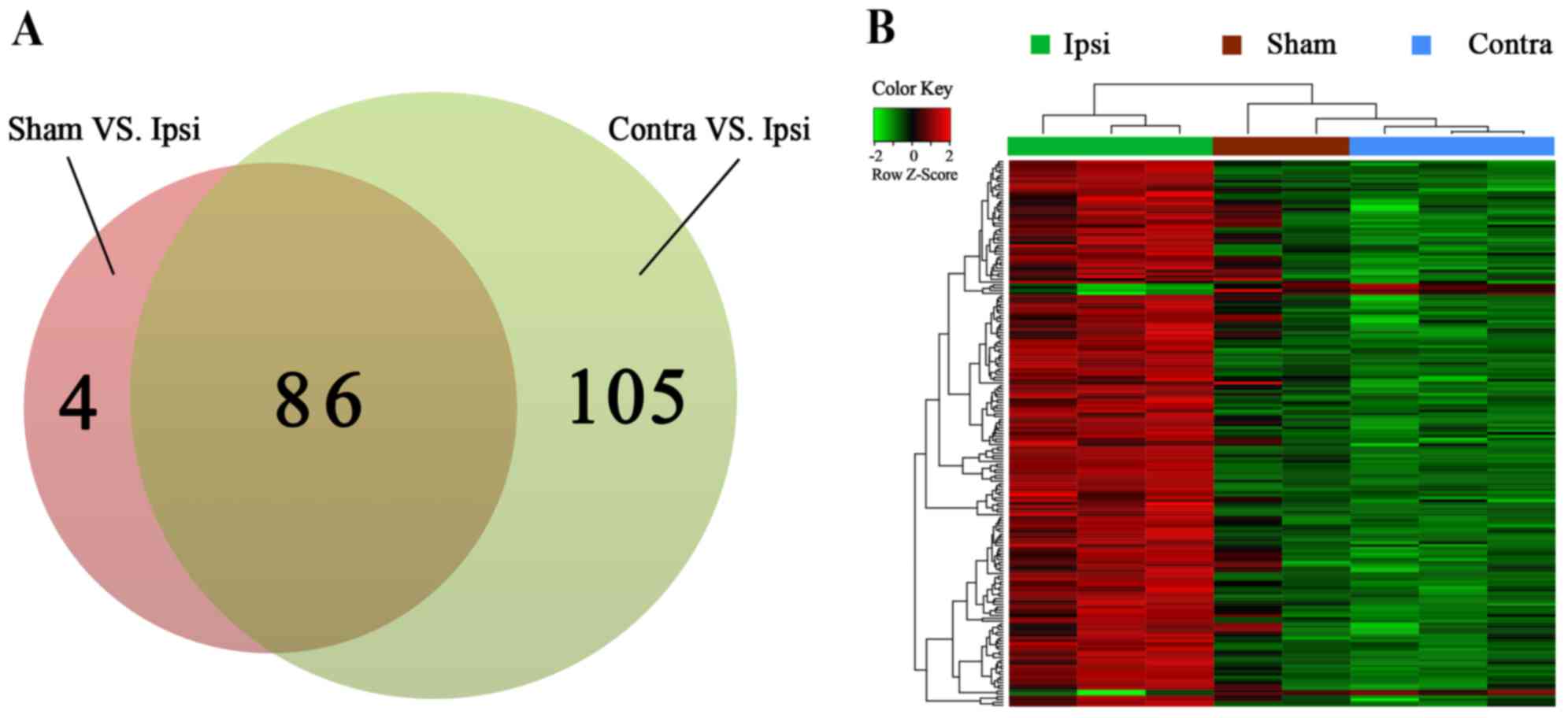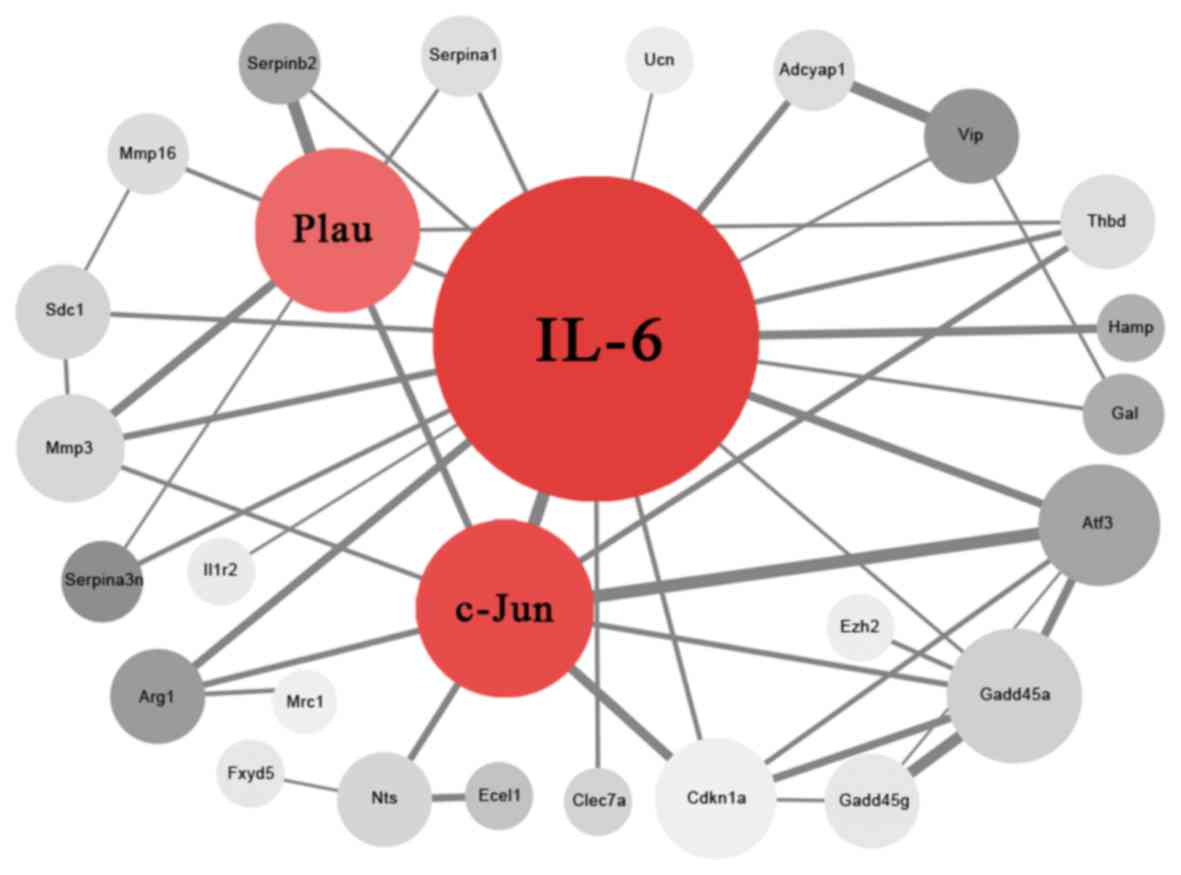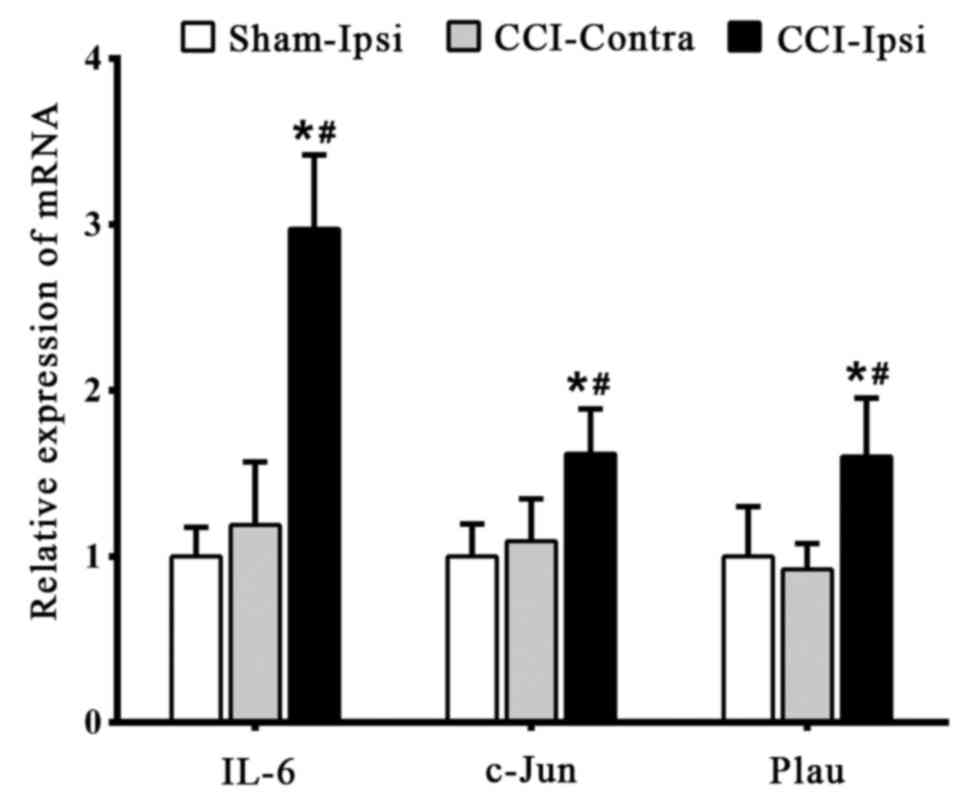|
1
|
Woolf CJ and Mannion RJ: Neuropathic pain:
Aetiology, symptoms, mechanisms, and management. Lancet.
353:1959–1964. 1999. View Article : Google Scholar : PubMed/NCBI
|
|
2
|
van Hecke O, Austin SK, Khan RA, Smith BH
and Torrance N: Neuropathic pain in the general population: A
systematic review of epidemiological studies. Pain. 155:654–662.
2014. View Article : Google Scholar : PubMed/NCBI
|
|
3
|
Bouhassira D, Lanteri-Minet M, Attal N,
Laurent B and Touboul C: Prevalence of chronic pain with
neuropathic characteristics in the general population. Pain.
136:380–387. 2008. View Article : Google Scholar : PubMed/NCBI
|
|
4
|
Attal N, Lanteri-Minet M, Laurent B,
Fermanian J and Bouhassira D: The specific disease burden of
neuropathic pain: Results of a French nationwide survey. Pain.
152:2836–2843. 2011. View Article : Google Scholar : PubMed/NCBI
|
|
5
|
Finnerup NB, Haroutounian S, Kamerman P,
Baron R, Bennett DL, Bouhassira D, Cruccu G, Freeman R, Hansson P,
Nurmikko T, et al: Neuropathic pain: An updated grading system for
research and clinical practice. Pain. 157:1599–1606. 2016.
View Article : Google Scholar : PubMed/NCBI
|
|
6
|
Attal N and Bouhassira D: Pharmacotherapy
of neuropathic pain: Which drugs, which treatment algorithms? Pain.
156 Suppl 1:S104–S114. 2015. View Article : Google Scholar : PubMed/NCBI
|
|
7
|
Gewandter JS, Dworkin RH, Turk DC, Farrar
JT, Fillingim RB, Gilron I, Markman JD, Oaklander AL, Polydefkis
MJ, Raja SN, et al: Research design considerations for chronic pain
prevention clinical trials: IMMPACT recommendations. Pain.
156:1184–1197. 2015. View Article : Google Scholar : PubMed/NCBI
|
|
8
|
Finnerup NB, Sindrup SH and Jensen TS:
Recent advances in pharmacological treatment of neuropathic pain.
F1000 Med Rep. 2:522010.PubMed/NCBI
|
|
9
|
Luscombe NM, Greenbaum D and Gerstein M:
What is bioinformatics? A proposed definition and overview of the
field. Methods Inf Med. 40:346–358. 2001. View Article : Google Scholar : PubMed/NCBI
|
|
10
|
Vega-Avelaira D, Géranton SM and
Fitzgerald M: Differential regulation of immune responses and
macrophage/neuron interactions in the dorsal root ganglion in young
and adult rats following nerve injury. Mol Pain. 5:702009.
View Article : Google Scholar : PubMed/NCBI
|
|
11
|
Carlson M: Rat2302.db: Affymetrix Rat
Genome 230 2.0 Array annotation data (chip rat2302). R package.
version 3.2.3. 2016.
|
|
12
|
Gautier L, Cope L, Bolstad BM and Irizarry
RA: Affy-analysis of Affymetrix GeneChip data at the probe level.
Bioinformatics. 20:307–315. 2004. View Article : Google Scholar : PubMed/NCBI
|
|
13
|
Wilson CL and Miller CJ: Simpleaffy: A
BioConductor package for Affymetrix quality control and data
analysis. Bioinformatics. 21:3683–3685. 2005. View Article : Google Scholar : PubMed/NCBI
|
|
14
|
Irizarry RA, Hobbs B, Collin F,
Beazer-Barclay YD, Antonellis KJ, Scherf U and Speed TP:
Exploration, normalization, and summaries of high density
oligonucleotide array probe level data. Biostatistics. 4:249–264.
2003. View Article : Google Scholar : PubMed/NCBI
|
|
15
|
Gentleman R: Annotate: Annotation for
microarrays. R package. version 1.56.1. 2017.
|
|
16
|
Ritchie ME, Phipson B, Wu D, Hu Y, Law CW,
Shi W and Smyth GK: Limma powers differential expression analyses
for RNA-sequencing and microarray studies. Nucleic Acids Res.
43:e472015. View Article : Google Scholar : PubMed/NCBI
|
|
17
|
Smyth GK: Linear models and empirical
bayes methods for assessing differential expression in microarray
experiments. Stat Appl Genet Mol Biol. 3:Article32004. View Article : Google Scholar : PubMed/NCBI
|
|
18
|
Ashburner M, Ball CA, Blake JA, Botstein
D, Butler H, Cherry JM, Davis AP, Dolinski K, Dwight SS, Eppig JT,
et al: Gene ontology: Tool for the unification of biology. The Gene
Ontology Consortium. Nat Genet. 25:25–29. 2000. View Article : Google Scholar : PubMed/NCBI
|
|
19
|
Huang da W, Sherman BT and Lempicki RA:
Systematic and integrative analysis of large gene lists using DAVID
bioinformatics resources. Nat Protoc. 4:44–57. 2009. View Article : Google Scholar : PubMed/NCBI
|
|
20
|
Szklarczyk D, Franceschini A, Kuhn M,
Simonovic M, Roth A, Minguez P, Doerks T, Stark M, Muller J, Bork
P, et al: The STRING database in 2011: Functional interaction
networks of proteins, globally integrated and scored. Nucleic Acids
Res. 39:D561–D568. 2011. View Article : Google Scholar : PubMed/NCBI
|
|
21
|
Smoot ME, Ono K, Ruscheinski J, Wang PL
and Ideker T: Cytoscape 2.8: New features for data integration and
network visualization. Bioinformatics. 27:431–432. 2011. View Article : Google Scholar : PubMed/NCBI
|
|
22
|
Bennett GJ and Xie YK: A peripheral
mononeuropathy in rat that produces disorders of pain sensation
like those seen in man. Pain. 33:87–107. 1988. View Article : Google Scholar : PubMed/NCBI
|
|
23
|
Livak KJ and Schmittgen TD: Analysis of
relative gene expression data using real-time quantitative PCR and
the 2(-Delta Delta C(T)) method. Methods. 25:402–408. 2001.
View Article : Google Scholar : PubMed/NCBI
|
|
24
|
Scholz J and Woolf CJ: The neuropathic
pain triad: Neurons, immune cells and glia. Nat Neurosci.
10:1361–1368. 2007. View
Article : Google Scholar : PubMed/NCBI
|
|
25
|
Milligan ED and Watkins LR: Pathological
and protective roles of glia in chronic pain. Nat Rev Neurosci.
10:23–36. 2009. View
Article : Google Scholar : PubMed/NCBI
|
|
26
|
Thacker MA, Clark AK, Marchand F and
McMahon SB: Pathophysiology of peripheral neuropathic pain: Immune
cells and molecules. Anesth Analg. 105:838–847. 2007. View Article : Google Scholar : PubMed/NCBI
|
|
27
|
Inoue K and Tsuda M: Microglia and
neuropathic pain. Glia. 57:1469–1479. 2009. View Article : Google Scholar : PubMed/NCBI
|
|
28
|
Dominguez E, Rivat C, Pommier B, Mauborgne
A and Pohl M: JAK/STAT3 pathway is activated in spinal cord
microglia after peripheral nerve injury and contributes to
neuropathic pain development in rat. J Neurochem. 107:50–60. 2008.
View Article : Google Scholar : PubMed/NCBI
|
|
29
|
Tsuda M, Shigemoto-Mogami Y, Koizumi S,
Mizokoshi A, Kohsaka S, Salter MW and Inoue K: P2X4 receptors
induced in spinal microglia gate tactile allodynia after nerve
injury. Nature. 424:778–783. 2003. View Article : Google Scholar : PubMed/NCBI
|
|
30
|
Lai CY, Hsieh MC, Ho YC, Lee AS, Wang HH,
Cheng JK, Chau YP and Peng HY: Growth Arrest and
DNA-damage-inducible protein 45β-mediated DNA demethylation of
voltage-dependent t-type calcium channel 3.2 subunit enhances
neuropathic allodynia after nerve injury in rats. Anesthesiology.
126:1077–1095. 2017. View Article : Google Scholar : PubMed/NCBI
|
|
31
|
Luo X, Tai WL, Sun L, Pan Z, Xia Z, Chung
SK and Cheung CW: Crosstalk between astrocytic CXCL12 and
microglial CXCR4 contributes to the development of neuropathic
pain. Mol Pain. 12:2016. View Article : Google Scholar : PubMed/NCBI
|
|
32
|
Ramer MS, Murphy PG, Richardson PM and
Bisby MA: Spinal nerve lesion-induced mechanoallodynia and
adrenergic sprouting in sensory ganglia are attenuated in
interleukin-6 knockout mice. Pain. 78:115–121. 1998. View Article : Google Scholar : PubMed/NCBI
|
|
33
|
Arruda JL, Sweitzer S, Rutkowski MD and
DeLeo JA: Intrathecal anti-IL-6 antibody and IgG attenuates
peripheral nerve injury-induced mechanical allodynia in the rat:
Possible immune modulation in neuropathic pain. Brain Res.
879:216–225. 2000. View Article : Google Scholar : PubMed/NCBI
|
|
34
|
Leah JD, Herdegen T and Bravo R: Selective
expression of Jun proteins following axotomy and axonal transport
block in peripheral nerves in the rat: Evidence for a role in the
regeneration process. Brain Res. 566:198–207. 1991. View Article : Google Scholar : PubMed/NCBI
|
|
35
|
Son SJ, Lee KM, Jeon SM, Park ES, Park KM
and Cho HJ: Activation of transcription factor c-jun in dorsal root
ganglia induces VIP and NPY upregulation and contributes to the
pathogenesis of neuropathic pain. Exp Neurol. 204:467–472. 2007.
View Article : Google Scholar : PubMed/NCBI
|
|
36
|
Wang C, Kong X, Zhu C, Liu C, Sun D, Xu Q,
Mao Z, Qin Q, Su H, Wang D, et al: Wu-tou decoction attenuates
neuropathic pain via suppressing spinal astrocytic IL-1R1/TRAF6/JNK
signaling. Oncotarget. 8:92864–92879. 2017.PubMed/NCBI
|
|
37
|
Jiang L, Pan CL, Wang CY, Liu BQ, Han Y,
Hu L, Liu L, Yang Y, Qu JW and Liu WT: Selective suppression of the
JNK-MMP2/9 signal pathway by tetramethylpyrazine attenuates
neuropathic pain in rats. J Neuroinflammation. 14:1742017.
View Article : Google Scholar : PubMed/NCBI
|
|
38
|
Sumi Y, Dent MA, Owen DE, Seeley PJ and
Morris RJ: The expression of tissue and urokinase-type plasminogen
activators in neural development suggests different modes of
proteolytic involvement in neuronal growth. Development.
116:625–637. 1992.PubMed/NCBI
|
|
39
|
Yamanaka H, Obata K, Fukuoka T, Dai Y,
Kobayashi K, Tokunaga A and Noguchi K: Tissue plasminogen activator
in primary afferents induces dorsal horn excitability and pain
response after peripheral nerve injury. Eur J Neurosci. 19:93–102.
2004. View Article : Google Scholar : PubMed/NCBI
|
|
40
|
Wouda EMN, Stienstra Y, van der Werf TS,
Kerstjens H, de Lange WCM, Coppes M, Kuijlen J, Tepper M and
Akkerman OW: Neurological and functional recovery in tuberculosis
patients with spinal cord injury in the Netherlands.
NeuroRehabilitation. 40:439–445. 2017. View Article : Google Scholar : PubMed/NCBI
|
|
41
|
Yesil H, Sungur U, Akdeniz S, Gurer G,
Yalcin B and Dundar U: Association between serum vitamin D levels
and neuropathic pain in rheumatoid arthritis patients: A
cross-sectional study. Int J Rheum Dis. 21:431–439. 2018.
View Article : Google Scholar : PubMed/NCBI
|
|
42
|
San-Martin DL, Santos DN and Baptista AF:
Pain Study Group: Pain prevalence, characteristics and associated
factors in human T-cell lymphotropic virus type 1 infected
patients: A systematic review of the literature. Braz J Infect Dis.
20:592–598. 2016. View Article : Google Scholar : PubMed/NCBI
|
|
43
|
Ding CP, Guo YJ, Li HN, Wang JY and Zeng
XY: Red nucleus interleukin-6 participates in the maintenance of
neuropathic pain through JAK/STAT3 and ERK signaling pathways. Exp
Neurol. 300:212–221. 2018. View Article : Google Scholar : PubMed/NCBI
|
|
44
|
Zhao WX, Wang PF, Song HG and Sun N:
Diosgenin attenuates neuropathic pain in a rat model of chronic
constriction injury. Mol Med Rep. 16:1559–1564. 2017. View Article : Google Scholar : PubMed/NCBI
|
|
45
|
Zaringhalam J, Tekieh E, Manaheji H and
Akhtari Z: Cellular events during arthritis-induced hyperalgesia
are mediated by interleukin-6 and p38 MAPK and their effects on the
expression of spinal mu-opioid receptors. Rheumatol Int.
33:2291–2299. 2013. View Article : Google Scholar : PubMed/NCBI
|
|
46
|
Banno T, Omura T, Masaki N, Arima H, Xu D,
Okamoto A, Costigan M, Latremoliere A, Matsuyama Y and Setou M:
Arachidonic acid containing phosphatidylcholine increases due to
microglial activation in ipsilateral spinal dorsal horn following
spared sciatic nerve injury. PLoS One. 12:e01775952017. View Article : Google Scholar : PubMed/NCBI
|













